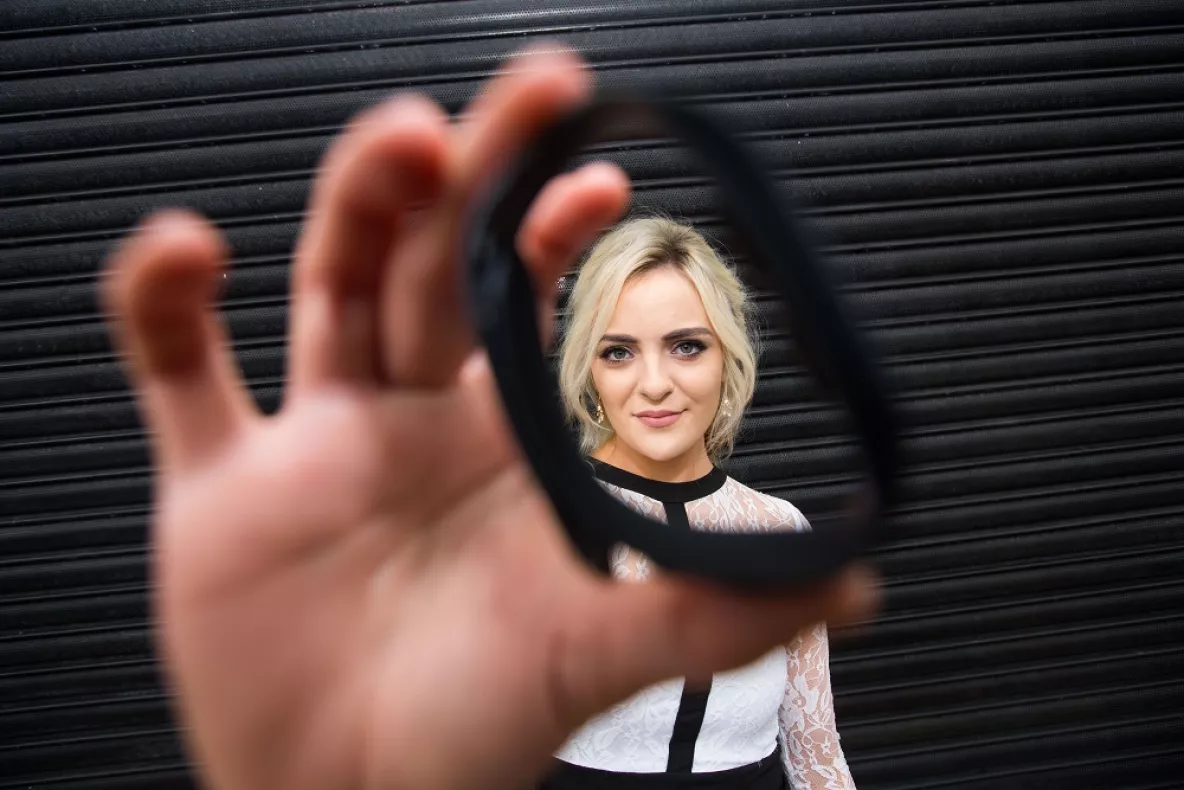
University of Limerick’s Design@UL 2017 opened on Tuesday in Limerick city centre. The exhibition is the culmination of the year’s work for the graduating students of architecture, product design and technology education.
The work on display shows, how, through creative problem solving, real-world research and iterative processes students can develop solutions that address real needs, explore new technologies and potential futures, question perceptions and ultimately improve everyday experiences.
Opening the exhibition, UL President Dr Des Fitzgerald paid tribute to all those involved saying: “The diversity of product design, architecture and technology project themes brings primary research to the fore, investigating complex problems and developing innovative and entrepreneurial solutions to change our user experience paradigms. These range from water rescue devices, assistive systems for people with visual impairment, to mapping and display systems for firefighters, and even a product to improve your golf swing. The hard work and innovative thinking of the students is clearly evident in the work on display”.
This year’s Design@UL show is the first showcase of work under the new School of Design at UL. It demonstrates what can be achieved through interdisciplinary collaboration and offers a vision of change for Design education and research in Ireland.
Dr Adam de Eyto, head of UL’s School of Design said, “This showcase presents the highest quality student work which offers a range of ideas to shape our future”.
The exhibit was opened by Dr Des Fitzgerald with special guest Catherine MacEnri, from the Department of Jobs, Enterprise and Innovation. The exhibition is open to the public in the former Helene Modes building at 10 Roches Street, Limerick from 10am to 4pm daily from May 24 until June 2.
Winner of the School of Architecture at University of Limerick (SAUL) Best Thesis Award was Rico Strinati, from Limerick. Rico’s project examined the indigenous pebble dash row housing in Limerick and the phenomenon of DIY structures made to the rear gardens containing sheds, pigeon lofts and out houses.
These DIY structures have an honesty and character which he transcribed into a broader community effort in the form of a trades school and community centre on the site of a former factory. Rico's proposal was a series of small buildings and exterior working spaces that tried to make a scale similar to the DIY Structures relationships.
Steve Murphy, Castletroy, Limerick was named Logitech Designer of the Year. His product NAVU is an advanced firefighter accountability system and personal communication aid. It works by monitoring the movements of a firefighter from the moment they enter a fire-fighting situation. These movements are transmitted wirelessly to the Entry Control Officer (ECO) overseeing the mission. The NAVU system projects the movement map onto the interior of the firefighter’s visor, along with other critical information such as remaining air levels, thermal imaging, location maps and important messages from the ECO. Ailish Reidy and Jack Leonard, both from Raheen, Limerick and Eoin McGrath from Newbridge, County Kildare were named runners up in this category.
Ailish’s product is RELAX: An anxiety and stress management system for young adults. It comprises of two wearable devices, an APP and a data share system. The system uses a Bluetooth connected module to track the electro dermal activity of the skin, the heart rate variability and breathing rates of the user. These bio signals give a clear indication of the user’s stress levels. The sensor module is placed in the breathing band or the wristband accessory. The app contains an interactive diary, guided breathing/meditation and an option to share progress with a medical professional to improve both personal and public health outcomes.
Eoin’s product VIA is an Independent navigation system for the visually impaired. VIA aims to improve independent navigation for people who are blind or visually impaired. An innovative cane allows users to create their own custom routes and travel these routes independently. The handle features an electronic braille pad that raises a section of the user’s route allowing them to feel their route as they walk along. VIA also uses an LED photodiode and a thermal imaging sensor that can alert the user of obstacles or people in their path.
Jack Leonard developed Rapid Rescue, a swift water environment rescue device for professional rescue services. It is worn around the waist by the rescuer while they swim to a drowning casualty. During a rescue, the device is attached to the casualty under the arms and then inflated. This keeps the casualty afloat and therefore safe from immediate danger.
Shane Cody of Nenagh, County Tipperary, was named the Enterprise Ireland Product Design Student Entrepreneur at Tuesday’s launch. Shane developed MANTA, a hydrofoil water exploration vessel, designed to provide safe and easy access to inland waterways. Its hybrid peddle and battery propulsion system affords users performance, efficiency and comfort.
Ruaidhri Phelan of Menlo, Galway was runner up in this award category. Ruaidhri developed the Wealth Watch, which aims to merge the benefits of cash and card in money management. Through a central hub, Wealth Watch allows users to set long-term and short-term savings goals, allocate budgets for days/weeks/months. The budget is then transferred to a wearable device that facilitates electronic payments whilst offering tactile feedback on remaining budget and expenditure. An accompanying app gives on-the-go control over spending and savings.